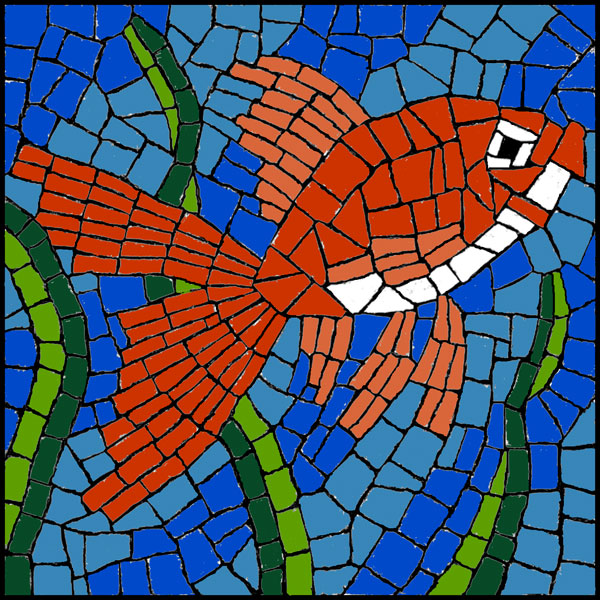
The collapse of buildings in antiquity can, paradoxically, both irrevocably destroy mosaics or protect and preserve them. The design might also be pegged out in string, or mounted in a wooden frame. Traces of guidelines have been found beneath some mosaics, either scored into or painted onto the mortar bedding. Mosaic decoration was not just confined to floors but featured on walls and vaults as well. Marble and glass were occasionally used as tesserae, as were small pebbles, and precious metals like gold. Polychrome patterns were most common, but monochrome examples are known. Materials for tesserae were obtained from local sources of natural stone, with the additions of cut brick, tile and pottery creating coloured shades of, predominantly, blue, black, red, white and yellow. Roman mosaics are constructed from geometrical blocks called tesserae, placed together to create the shapes of figures, motifs and patterns. Mosaic of Eastern Roman emperor Justinian I, 6th century The mosaic decoration of the local palace complex culminates in the gallery, which contains a scene of animal hunting and fighting covering an area of 3,200 square feet (300 m 2). 300 AD) from Roman Sicily perhaps represent the hallmark of mosaic art in the Late Imperial period. The mosaics in the Villa Romana del Casale (c. However, they contained far more figured scenes on average, less abstract design, the absence of lead strips, as well as an almost complete lack of complex, three-dimensional scenes utilizing polychromy until the Pompeian Second Style of wall painting (80-20 BC). The earliest mosaics of Roman Pompeii, dated to the Pompeian First Style of wall painting in the late 2nd and early 1st centuries BC, were clearly derived from the Hellenistic Greek model.

The earliest known pebble mosaics and use of chip pavement are found at Olynthus in Greece's Chalcidice, dated to the 5th to 4th centuries BC, while other examples can be found at Pella, capital of Macedon, dated to the 4th century BC. Dunbabin concur with this assessment, asserting that the transition from pebble mosaics to more complex tessellated mosaics originated in Hellenistic- Greek Sicily during the 3rd century BC, developed at sites such as Morgantina and Syracuse. This is contradicted by Ruth Westgate, who contends that the earliest tessellated mosaics of the Hellenistic period date to the 3rd century BC, with the 2nd to early 1st-century BC mosaics of Delos constituting roughly half of the known examples. Witts claims that tessellated pavements, using tesserae, were used in Europe from the late fifth to early fourth centuries BC.

Perhaps the earliest examples of Greco-Roman mosaic floors date to the late Republican period (2nd century BC) and are from Delos, Greece.

Mosaic with Xenia, 4th century AD, Pius Clementine museum, Vatican Museums


 0 kommentar(er)
0 kommentar(er)
